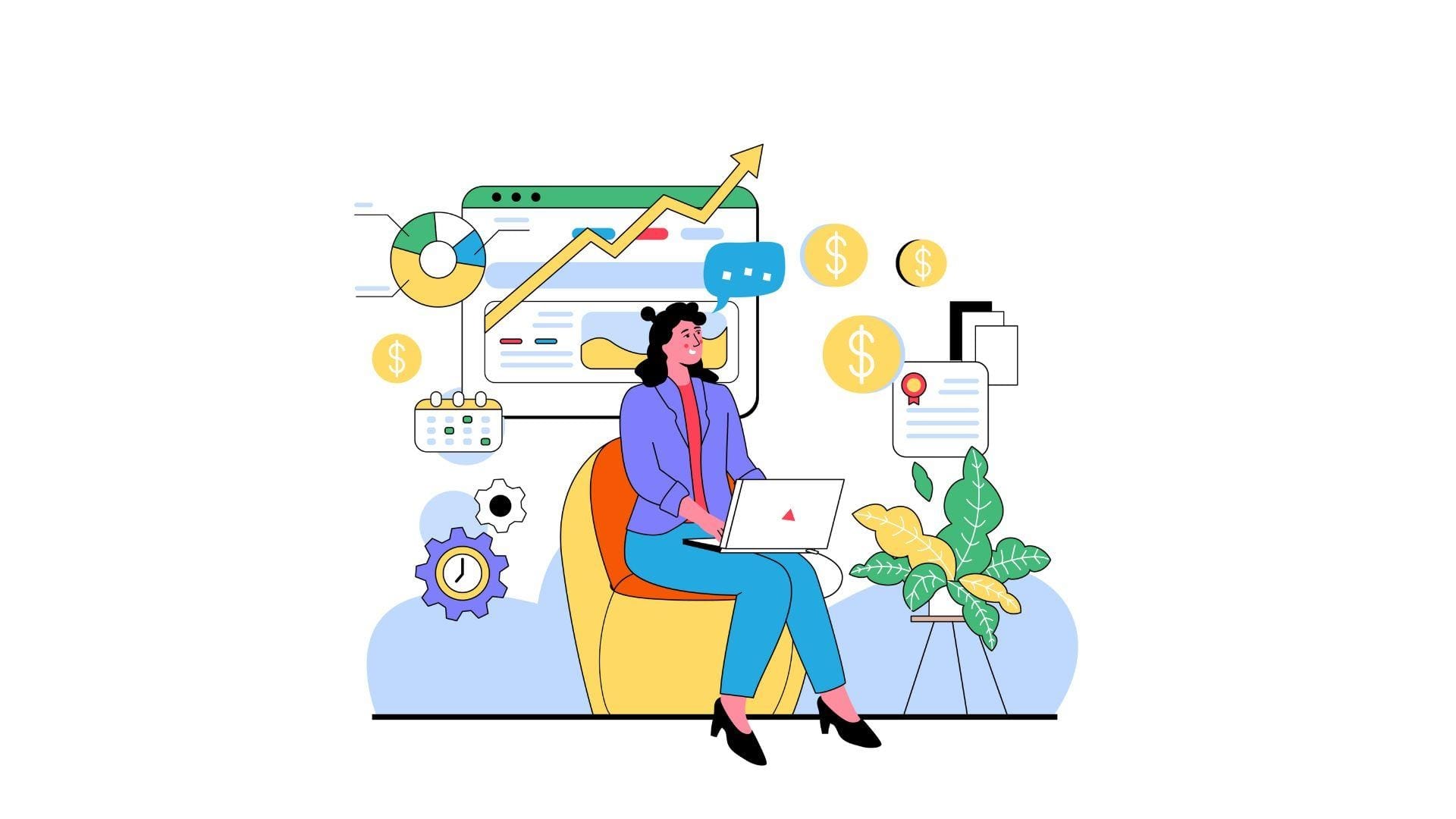Building Top Outbound Sales Strategies for B2B Businesses
Discover top outbound sales strategies for B2B businesses to target high-quality leads, craft compelling pitches, and close deals faster with proven techniques.

B2B outbound sales strategies go beyond simply reaching out; it's about breaking through the noise and ensuring your message stands out in a competitive B2B space. But here's the challenge: over 40% of salespeople cite prospecting as the toughest part of their role. That means nearly half of your sales team may be struggling to connect with the right prospects.
So, how do you turn this obstacle into an advantage? By developing strategies that transcend the basics, strategies that allow you to target high-quality leads, craft irresistible pitches, and close deals with speed and precision.
This blog will dive into the top B2B outbound sales strategies designed specifically for B2B businesses. Whether your goal is to land bigger clients or boost your conversion rates, these actionable tips will give you the competitive edge you need to succeed.
Top B2B Outbound Sales Strategies
Outbound sales are critical for B2B businesses aiming to drive consistent growth, generate high-quality leads, and close deals faster. To succeed in a competitive market, sales teams need strategies that go beyond traditional methods and focus on engagement, personalization, and efficiency.
Here’s a comprehensive guide to key outbound sales strategies that can help you achieve B2B success.
Cold Emailing Best Practices for B2B Sales
Cold emailing remains one of the most effective ways to connect with B2B prospects when executed strategically. To make the most of your cold email campaigns, consider the following best practices:
1. Craft Attention-Grabbing Subject Lines
- The subject line is the first thing your prospect sees. A concise, intriguing subject line can significantly increase your open rates.
- Focus on sparking curiosity or providing immediate value to the recipient.
Tip: Test different subject lines with A/B testing to identify which resonates best with your audience.
2. Personalize Your Emails
- Personalization is crucial in B2B cold emailing. Reference the recipient’s company, role, or recent developments to show that your email is tailored to them.
- Mention specific pain points, challenges, or even recent achievements that demonstrate you’ve done your homework.
Tip: Personalizing even small details, like referring to a recent blog post or conference the prospect attended, can significantly boost your response rate.
3. Keep It Short and Value-Driven
- Decision-makers are busy, so avoid lengthy emails. Keep your message clear, concise, and to the point.
- Focus on how your solution solves their specific pain points and improves their business outcomes.
- Use bullet points for easy readability and ensure the value proposition is immediately obvious.
4. Include a Clear Call to Action (CTA)
Every cold email should prompt the recipient to take the next step, whether that’s scheduling a call, replying with feedback, or clicking a link to learn more.
Tip: Keep the CTA simple and direct. For example, "Would you be open to a 15-minute call this week to discuss how we can help [solve specific issues]?"
5. Follow Up Consistently
Persistence is key in cold emailing. If you don’t receive a response after your first email, follow up with polite reminders.
Tip: Use automated tools like Mailshake or Lemlist to streamline and automate your follow-up process, ensuring consistency without added effort.
For more insights into optimizing your cold emailing efforts, explore our guide on Integrating B2B Cold Email Templates for Better Sales Engagement.
Effective Cold Calling Strategies for B2B Sales
While digital communication tools have evolved, cold calling remains an essential part of B2B sales strategies. To improve the productivity and success of your cold calls, follow these strategies:
1. Prepare Thoroughly
Research the prospect’s business, industry, and any recent developments before making the call. The more informed you are, the more credible and trustworthy you’ll appear.
Tip: Use LinkedIn, company websites, and recent news to gather insights about the prospect’s current situation and needs.
2. Start with a Strong Introduction
- Your introduction sets the tone for the rest of the call. Quickly introduce yourself, state your purpose, and explain how you can help.
- A strong opening increases the chances of the prospect staying engaged for the duration of the conversation.
3. Ask Open-Ended Questions
Instead of leading with a pitch, ask questions that allow the prospect to discuss their challenges and needs.
Example: "What’s the biggest obstacle you’re facing with [specific issue] in your business right now?" This builds rapport and positions you as a consultative partner, not just a seller.
4. Listen Actively
- Listening is just as important as speaking. Pay close attention to the prospect’s responses and adjust your approach accordingly.
- This shows you care about their business needs and increases the likelihood of moving the conversation forward.
5. Handle Objections Calmly
Be ready to address common objections with calm, thoughtful responses. Focus on how your solution can help overcome the prospect’s specific pain points.
Tip: Turn objections into opportunities by framing your responses around the benefits of your solution.
Account-Based Marketing (ABM) for High-Value Prospects
Account-based marketing is a highly focused outbound approach that targets specific high-value companies with personalized campaigns.
1. Identify High-Intent Accounts Use firmographic data, technographics, and intent data to pinpoint accounts that are a strong fit for your solution.Tip: Incorporate tools like ZoomInfo, Clearbit, or 6sense to identify high-opportunity targets based on buying signals.
2. Customize Outreach for Each Account
Tailor your emails, ads, and sales pitches to the specific pain points and goals of each account.Tip: Develop mini-campaigns or playbooks for each key account to ensure consistency across touchpoints.
3. Align Sales and Marketing TeamsABM requires close collaboration between sales and marketing to coordinate content, timing, and messaging.Tip: Hold regular sync-ups between teams to align campaign goals, messaging cadence, and lead nurturing efforts.
Referral-Based Prospecting to Build Trust Quickly
Referrals often convert faster and with higher lifetime value compared to cold leads.
1. Ask at the Right Moment
Request referrals after delivering value, such as post-implementation or after a positive customer review.Tip: Frame your request clearly: “Do you know another company that might benefit from what we’ve done together?”
2. Incentivize and AppreciateOffer small incentives or public recognition to encourage clients or partners to refer others.Tip: Even a personalized thank-you note or social media shoutout can go a long way in building goodwill.
Multi-Channel Outreach for Higher Engagement Rates
Using multiple outreach channels increases your chances of catching your prospect’s attention.
1. Combine Email, Calls, Social Media, and Direct Mail Don't rely solely on email, mix it up with calls, LinkedIn messages, and even handwritten notes or gifts for key accounts.Tip: Use sales engagement platforms like Outreach or Salesloft to sequence and automate multi-channel touchpoints.
2. Track and Optimize Channel PerformanceAnalyze which channels are driving the most engagement and double down on what's working.
Use of Sales Technology and Automation Tools
Modern outbound strategies leverage AI and automation to improve efficiency and personalization.
1. Automate Repetitive Tasks and WorkflowsTools like Floworks’ Alisha SDR help streamline day-to-day sales workflows by integrating with your CRM, automating follow-ups, and managing repetitive tasks, all with natural language prompts. This saves time and allows sales teams to focus on conversations that move the needle.Tip: Flowork’s Alisha SDR can act as your AI assistant for LinkedIn and email outreach, helping you craft personalized messages at scale.
2. Enhance Personalization with AI InsightsUse AI to analyze past interactions and suggest tailored messaging for each contact.Tip: Combine Floworks with tools like Apollo or Lemlist for smart sequencing and hyper-personalized messaging that feels human, not robotic.
3. Analyze and Refine Your OutreachMonitor performance metrics like open rates, response rates, and meeting conversions to fine-tune your outreach campaigns.
Create a Sales Playbook to Standardize Success
A structured playbook ensures consistency across the sales team and shortens onboarding time for new reps.
1. Document Best Practices and Messaging Include email templates, objection-handling scripts, and follow-up cadences.Tip: Keep your playbook living and evolving by regularly updating it with insights from top performers.
2. Train and Coach Regularly Reinforce your playbook through training, role-playing, and real-time feedback sessions.Tip: Use call recording tools like Gong or Chorus to review calls and identify areas for improvement.
Social Selling on LinkedIn for B2B Success
Social selling is revolutionizing B2B sales. LinkedIn, in particular, offers vast opportunities for engaging with prospects in a personal and meaningful way. Here’s how to use LinkedIn effectively to enhance your outbound sales strategy:
1. Optimize Your LinkedIn Profile
- Think of your LinkedIn profile as your digital business card. Ensure it clearly communicates your expertise, your value proposition, and the problems you solve.
- Highlight relevant experience, certifications, and success stories to build trust and establish credibility with potential connections.
2. Engage with Valuable Content
Establish authority by sharing insightful content, engaging in industry discussions, and commenting on posts shared by your prospects.
Tip: Curate and share content that directly addresses the pain points and challenges your target audience is facing. This positions you as a thought leader and keeps you top of mind.
3. Send Personalized Connection Requests
When reaching out to connect with prospects, always personalize your connection requests. Mention mutual interests, specific challenges, or values that you can bring to the relationship.
Example: "Hi [Prospect Name], I saw you recently spoke about [topic]. I’d love to connect and share insights on how [your solution] can help with [specific challenge]."
4. Build Meaningful Relationships
- Social selling is about building relationships, not pushing a sale. Focus on providing value first by sharing relevant resources, offering helpful advice, or asking insightful questions.
- Engage consistently but subtly, and don’t rush to pitch your product until the relationship is nurtured.
9 Steps to Maximize B2B Outbound Sales
The outbound sales process is a sequence of steps designed to help sales teams systematically convert prospects into customers. By following each step with precision and dedication, sales teams can maximize their outreach efforts and close rates.
Step 1: Lead GenerationIdentify potential customers using outreach methods like cold emailing, calling, and LinkedIn, focusing on companies that match your ICP. Use tools like LinkedIn Sales Navigator, ZoomInfo, or Hunter.io to find accurate contact info.
Step 2: Lead QualificationQualify leads using frameworks like BANT or CHAMP to ensure they have the need, budget, and authority to buy. Segment leads by buying intent and prioritize accordingly.
Step 3: Initial OutreachSend personalized emails or LinkedIn messages that address the lead’s pain points, followed by a quick phone call. Focus on adding value and building trust early on.
Step 4: Follow-up OutreachSend multiple follow-ups via email, phone, or LinkedIn if there's no response. To stay relevant and top of mind, each follow-up should offer additional value, such as a case study or insight.
Step 5: Discovery Call / Qualification CallUse a discovery call to understand the lead’s needs and assess solution fit. Ask open-ended questions and position your solution as the best way to solve their problem.
Step 6: Sales Presentation or DemoWalk the prospect through a tailored demo that focuses on their specific challenges and business goals. Emphasize benefits and ROI, not just features.
Step 7: Handling Objections and NegotiationListen actively to objections and respond with tailored solutions. Negotiate pricing or terms if needed to align with the prospect's expectations.
Step 8: Closing the DealOnce concerns are addressed, guide the buyer through the final steps and ask for the sale. Confirm pricing, terms, and deliverables in writing.
Step 9: Post-Sale Follow-ThroughSupport the customer post-sale with smooth onboarding and regular check-ins. Provide training resources and stay connected to foster loyalty and retention.
Overcoming Common Challenges in Outbound Sales
Outbound sales can be advantageous, but it isn’t without its hurdles. Here’s a detailed look at the most common obstacles in outbound sales and actionable solutions to overcome them effectively:
1. Low Response Rates
Sales teams often struggle with prospects who don’t respond to calls or emails. A low response rate can be discouraging, but it’s usually a sign that the outreach approach needs improvement.
How to overcome:
- Personalize your outreach: Generic emails or pitches get ignored. Address the recipient by name and include details that resonate with their needs, like a recent company achievement or industry challenge.
- Optimize email subject lines: Your subject line is the first thing a prospect sees. Make it concise, intriguing, and relevant to their business. For instance, "How [Solution] Can Help [Company Name] Save 30% on Costs."
- Diversify your outreach channels: Don’t rely solely on email. Combine cold calls, LinkedIn messages, and even direct mail for a more dynamic approach. Multi-channel strategies often result in higher engagement.
2. Rejection and Objections
Hearing “no” is part of the sales process, but constant rejection can be demotivating, especially if the reasons aren’t clear.
How to overcome:
- Understand objections: Take time to analyze why prospects are saying no. Is it pricing, timing, or lack of perceived value? Address these issues in your pitch proactively.
- Refocus on value: Instead of just selling a product, emphasize how your solution directly solves the prospect's challenges. For instance, explain how your software can cut manual effort by 50% or increase revenue by 20%.
- Use rejection as feedback: Not every “no” is permanent. Follow up after a few weeks with new insights or a success story that aligns with their goals. Persistence, paired with professionalism, can turn a rejection into a future opportunity.
3. Difficulty in Reaching Decision-Makers
Gatekeepers and organizational hierarchies can make connecting with the right people tough. Wasting time on the wrong contacts slows down the sales cycle.
How to overcome:
- Consider LinkedIn and professional networks: Research the organizational structure to identify key decision-makers, like CEOs, department heads, or purchasing managers.
- Befriend the gatekeeper: Instead of bypassing gatekeepers, build rapport with them. Explain how your solution benefits the organization and why speaking to the decision-maker is crucial.
- Perfect your timing: Decision-makers are often busiest during the day. Try reaching out early in the morning or later in the afternoon when they might be more available.
4. Managing Large Prospect Lists
Large prospect lists can be overwhelming, leading to poor organization and missed opportunities. Without the right tools,sales reps may struggle to stay on top of follow-ups.
How to overcome:
- Invest in a robust CRM: Customer Relationship Management (CRM) tools like Salesforce or HubSpot help track interactions, schedule follow-ups, and maintain prospect data efficiently.
- Segment your prospects: Break down your list into categories based on company size, industry, and potential value. This makes targeting specific groups more manageable and effective.
- Automate repetitive tasks: Use tools like Alisha to handle tasks like follow-up emails and meeting scheduling, freeing up your team to focus on meaningful conversations.
Top Automation Tool to Streamline B2B Outbound Sales Strategy
Automation tools have revolutionized how sales teams operate by eliminating repetitive tasks. Floworks’ flagship product, Alisha, is a prime example of how automation can enhance outbound sales strategies.
Source: Link
Alisha is an AI-powered Sales Development Representative (SDR), handling critical tasks like:
- Personalized Outreach: Alisha crafts tailored emails for each prospect based on data insights, increasing engagement rates.
- Follow-Ups: It ensures timely follow-ups with leads, reducing the chances of missed opportunities.
- Meeting Scheduling: Alisha schedules meetings directly with qualified leads without relying on external tools like Calendly.
- CRM Integration: It seamlessly integrates with CRMs like HubSpot, automatically logging interactions and maintaining CRM hygiene.
Incorporating Alisha into your sales process can save time, reduce operational costs, and allow you to focus on high-value activities like closing deals.
Conclusion
Outbound sales remain one of the most effective strategies for driving B2B growth, provided it’s executed with precision and creativity. By defining clear strategies, implementing the proper techniques, and addressing common challenges, your business can create a consistent pipeline of high-quality leads and close deals faster. Success in outbound sales is about being proactive, data-driven, and persistent in your approach.
Floworks is an AI-powered sales automation platform that supercharges your outbound sales efforts. Its key feature, Alisha, the AI Sales Development Representative, handles repetitive tasks like cold outreach, follow-ups, lead qualification, and CRM integration.


